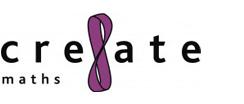Key Ideas - Chapter 5: Spatial and Geometrical reasoning
A list of resources to support the book and website "Key Ideas in the Teaching of Mathematics"
Designing Logos
In this activity from Cre8ate maths students are encouraged to experiment with different kinds of symmetry to create a suitable logo. There is an exercise in using symmetrical properties to reproduce previously designed logos and this activity is complemented by Creating a logo, which gives students a free hand in using line and rotational symmetry to create their own logo.
Packaging
This topic explores flat designs which can be folded and used to package food and drink. These Cre8ate maths activities provide rich experience of visualising 3 dimensional shapes from 2 dimensional representations.
In Four Chocolates and It Takes the Biscuit!, studentss will need to measure accurately and construct accurate diagrams. Four Chocolates will draw on and develop their understanding of relationships between linear dimensions and volume.
Lost in Space
Progression in learning about spatial relations, especially three-dimensional (3D) geometry, entails working with 2D representations of 3D shapes.
This NRICH task uses the context of the shadows from a piece of outdoor playground equipment to entice pupils into honing their 3D visualisation skills. The idea of sun shadows can be extended to other activities, including reproducing the ancient feat of Eratosthenes in estimating the circumference of the earth, or using trigonometry to give a measure of the height of a building from its shadow (assuming the solar altitude is known).
An image of a piece of equipment found in the playground of a London school. Students are asked a number of questions about the shape of the image, what the image may be used for, the shadow cast from the shape.
Tiling Patterns
Cre8ate maths provides these activities which investigate the tessellation of regular polygons and its application in construction. Initially students identify which regular polygons tessellate, providing the opportunity to discuss the interior angles of polygons and the sum of angles at a point, before looking at patterns formed by semi regular tessellations.
In More triangles than squares students investigate the ratio of triangles, squares and hexagons, used to tile the floor in a shopping centre. There are a variety of methods which they could use to do this, it is most effective when pupils work in groups and are encouraged to both experiment and discuss their ideas.
Pentakite
Congruency and similarity are powerful ideas in geometry. This NRICH task entails geometrical reasoning involving angles and similar triangles. A diagram is not provided in the task, thereby encouraging pupils to draw their own. As well as geometrical similarity, the task opens up links to the golden ratio and the Fibonnaci sequence.
Where are they?
This NRICH task requires students to draw, on a piece of isometric paper, a rectangle, a rhombus, a trapezium, a aprallelogram that is not a rectangle, an equilateral triangle, a right angled triangle, a scalene triangle, an isosceles triangle that is not and equilateral triangle, a pentagon, a hexagon, a heptagon, an octagon.
The task builds on pupils' abilities to recognise and name shapes by asking them to generate a shape given only the name. This requires pupils to pay attention to geometric properties while disregarding orientation.
Pythagoras Proofs
In mathematics, the process of proving involves posing and solving problems, analysing examples, making and revising conjectures, and searching for classes of counter-examples.
This NRICH activity explores three different ideas which can lead to proofs of Pythagoras' Theorem. Students are asked which method they find easiest to understand and which method they would find the easiest to explain to someone else.
Proximity
In what is sometimes called local deduction, pupils can utilise geometrical properties that they already know to deduce or explain other facts or results.
This NRICH activity in which students are given an image of a regular icosahedron with three red vertices marked. Students are asked to prove that there is a vertex that has at least two red neighbours.
Rotating Triangle
One approach to geometric proof is to focus on logical arguments that build on pupils' prior knowledge in order to demonstrate the truth of some geometrical result. Preferably, the result should be one that has some element of surprise and is based around something previously conjectured by pupil after conducting a well-chosen ‘experiment’.
This NRICH activity features an interactive containing two smaller circles contained within a larger circle. The two smaller circles, touch each other externally and touch the large circle internally.
Students are asked to explain what happens to the perimeter of the triangle formed by connecting the centres of the circles as the two smaller circles roll around touching the inside rim of the bigger circle or as the two smaller circles vary in size.


